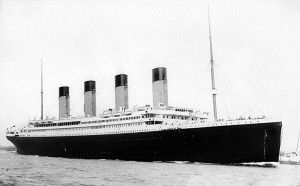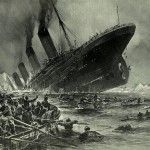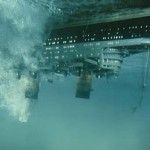Stuart Kauffman and Giuseppe Longo
July 7, 2011
At least since Isaac Newton, an enduring belief among physicists and many other scientists has been that there is a fundamental set of laws, presumably concerning particle physics, that will deductively entail the entire evolution of the universe and all in it, including all of earthly life, the evolution of the biosphere, econosphere and even history. If so, nothing truly novel, ie un-entailed, can arise.
In this piece we provide strong grounds to say that the long held belief that there is a theory entailing all that happens in the universe is false. No Law entails the evolution of life. If so, reductionism is false, and we must think anew. Our world is not what we have thought.
Establishing such a strong claim will require a set of steps.
First, were classical physics correct, the entire evolution of the universe, stated Laplace, would be entirely determined by knowing the positions and momenta of all the particles in the universe and application of Newton’s three laws of motion and universal gravitation. In Laplace’s time, this fully determined behavior was also equated with predictability. Henri Poincare’, considering three gravitating bodies, showed that the behavior of this system was deterministic, but chaotic. Due to the famous sensitivity to initial conditions which lead to radically different behaviors, and because initial conditions cannot be specified with infinite precision, the universe and all in it might be deterministic, but unpredictable.
Quantum mechanics has, in effect, replaced the determinism of the classical physical world with indeterminism. Despite Einstein’s claim to the contrary, “God does play dice with the universe”. But familiar quantum mechanics is quantum “random”, as in the radioactive decay of a nucleus, acausally, a random “Poisson” process in time.
Our first step is to point out, as in a past NPR post, that biological evolution defies the twin pillars of contemporary physics, quantum mechanics and classical physics — never united. Mutations to the DNA of contemporary organisms is often an indeterminate quantum random event. Mutations supply Darwin’s “heritable variation”. Yet evolution itself by natural selection is NOT random. The eye has evolved eleven times. The octopus camera eye and vertebrate camera eye evolved independently, and are nearly identical except that in us the blood vessels lie between the retina and outside world, while in the octopus, the blood vessels sensibly lie behind the retina. The perfection of the camera eye stunned Darwin. The convergent evolution of the octopus and vertebrate eye is not random, but due to powerful selection. The convergent evolution of marsupial and mammalian forms, like the Tasmanian wolf and mammalian wolf are also examples of convergent, non-random evolution.
It does NOT follow from this that the evolution of the biosphere is not entailed by some still unknown law that may unite quantum mechanics and classical physics in an unexpected way. Conversely, the fact that quantum mechanics and classical physics in the form of General Relativity have NOT been united since 1927, while both play a role in biological evolution, is consistent with the possibility that the evolution of the biosphere is ENTAILED BY NO LAW AT ALL.
Central to the belief that there is some law “down there” that entails all that happens in a hierarchical way, is the belief that all can be derived by a kind of aggregation upward and entailment upward from some simplest parts, quarks, gluons, photons and electrons, say, or string theory — only these are fundamental entities.
We believe this view is mistaken. What we shall call “Kantian wholes” dominate what exists and evolves in the biosphere and exist AS WHOLES. Our theory builds from this.
Kant pointed out that in an “organized being” the parts exist for and by means of the whole, the whole exists for an by means of the parts. In a past post one of us introduced Collectively Autocatalytic Sets. Gonen Ashkenazi at Ben Gurion has a nine peptide (peptides are small proteins) collectively autocatalytic set. Each of the nine peptides catalyzes, or speeds up, the reaction binding together fragments of some other peptide into another copy of that other peptide. No peptide catalyzes its OWN formation. Rather, the SET AS A WHOLE has the property that each reaction requiring catalysis IS catalyzed by some other member of the set. In the collectively autocatalytic set, the set as a WHOLE catalyzes its own formation. Calling catalysis a Task, the collectively autocatalytic set achieves TASK CLOSURE.
A collectively autocatalytic set is an example of a Kantian Organized Being. The parts, here the peptides, exist in the universe for and by means of the whole which organizes their catalytic behaviors, while the whole exists in the universe for and by means of the parts. Given such a set, the function of a given peptide is DEFINABLE, its role lies in sustaining the whole, not jiggling water.
In his forthcoming book, “Incomplete Nature”, Terrance Deacon, a professor at U.C. Berkeley, points out that philosopher Jagwon Kim has argued that even such Kantian wholes do not preclude deduction upward from particles to wholes. But, points out Kim, according to Deacon who agrees, that argument rests on classical “materialism” ie the classical physics of point particles and fields. Deacon rightly notes that quantum mechanics, as in Feynman’s sum over all possible pathways the photon might take through the two slits, obviates such a naive materialism. The position and momentum of a particle cannot be jointly measured with precision, quantum mechanics precludes point particles existing prior to measurement, and quantum systems are ineluctably “wholes”. Thus the collectively autocatalytic set is a Kantian “Organized Being” whose ever changing atoms and molecules exist in the universe — when most complex things will never exist — as a whole in its own right, an entity which is sustained existing in the universe by the linked dynamical classical and quantum processes of parts and whole enabling one another. The specific peptides may come and go, yet the Kantian whole remain as a self sustaining, partly quantum, partly classical, perhaps partly Poised Realm, process.
Next, note that a biological reproducing CELL achieves a TASK CLOSURE that involves much more than catalytic tasks, and includes protein trafficking, membrane formation and deformation, work cycles and mitosis.
The wonderfully mysterious issue is this: Given any part or process or set of parts or processes in a cell, say molecules, each part, alone or with others, has an unbounded, unorderable, set of causal and quantum consequences, and, in addition, each consequence or set of consequences has an apparently unbounded and unorderable set of potential uses. Thus, the ordering of water molecules by one protein may form a quantum electron transfer pathway with a nearby protein that happens to order water molecules. Or a protein fragment, by Darwinian preadaptation, may become part of the flagellar motor of a bacterium. In short, for any single or indefinite set of parts and processes, their causal and quantum relations NEED ONLY FIND SOME UNPRESPECIFIED USE alone or together, which augments the capacity of the cell to survive in some selective enviornment. If this occurs, these NOW SPECIFIC BUT UNPRESTATABLE causal consequences, and the new SPECIFIC BUT UNPRESTATABLE functionality, come to exist more or less stably in the universe in an evolving Kantian whole. More, that environment may consist of other cells, as in a mixed microbial community co-evolving with one another often by Darwinian UNPRESTATBLE preadaptations. Further, as posted before on NPR, new unprestatable adjacent possible empty niches WHICH ARE NOT THEMSELVES SELECTED FOR AS NEW NICHES PER SE, come to exist in the universe, and alter the very possibilities that future evolution may or will occupy. Without selection, the biosphere builds some of the very possibilities it becomes. We do not know what those new niches will be.
Critically, there is no way to say ahead of time which of these untold causal and quantum consequences of one or many parts may alone or jointly find some unprestatable use in the evolving cell. All that matters is that SOME KANTIAN ORGANIZED BEING CONTINUES TO EXIST IN THE UNIVERSE, and perhaps is even fitter. More, there is no way to say which new adjacent possible empty niches come to exist, without selection, and modify the future possible evolution of the biosphere.
After the fact we can analyze the new Kantian whole. Before the fact, we can say essentially nothing.
Now Newton taught us how to do science: i establish the laws of motion, eg. his three laws of motion and universal gravitation. ii measure the initial conditions, say the positions and momenta of the billiard balls on the billiard table. iii Establish the boundary conditions, say the boundaries of the billiard table. iv. State his laws in differential equation form. v. Integrate the equations, given initial and boundary conditions, to deduce the now ENTAILED future, (and past) perhaps chaotic, deterministic trajectories of the balls.
We now claim two major points: i. We cannot derive the laws of motion of co-evolving cells, Kantian wholes, making their worlds with one another by means including preadaptations. ii. Even if we could, we do not know the selective conditions which constitute the boundary conditions on the laws of motion which we do not, in any case, have, thus even if we had them, we cannot integrate those laws to obtain the entailed becoming of the co-evolving cells or species in the biosphere.
We make point i, No Laws of Motion. Consider the syllogism: All men are mortals. Socrates is a man. Therefor Socrates is a mortal. Now try: All bibbles are thwap. Gloup is a bibble. Therefore Gloup is a thwap. The first syllogism’s truth rests on our knowing the meaning of the true first and second premises. In the second syllogism, we have no idea if “all bibbles are indeed thwap, nor if “Gloup is in fact a bibble. We do not know if the major and minor premises are true, so do not know if the conclusion follows deductively. If we do not BEFORE HAND know the relevant variables, their causal and quantum consequences that play now functional roles in sustaining the Kantian organized being of the evolving cell or co-evolving cells, then beforehand we have NO WORDS for those functional roles. Hence we neither know the meanings of those words and, it follows, we cannot mathematize beforehand the becoming of the biosphere.
The claim that we cannot mathematize beforehand the becoming of the biosphere without knowing the meanings of concepts beforehand rests on the increasingly accepted view that the foundations of mathematics cannot be merely syntactic manipulations of uninterpreted symbols from axioms of uninterpreted symbols defined as true. Rather, the modern “constructivist” view of mathematics is that founding concepts with semantics are needed. However, the meanings of those concepts must be known beforehand to erect the mathematics. But we do not know the concepts beforehand. In short, we can have NO LAWS OF MOTION for the evolving Kantian wholes literally co-creating the biosphere.
(We note that the syllogism case is slightly misleading for this logic is complete, and even the “bibble” example is formally valid. In the general case, the constructivist view DOES require that the meanings of terms be known before hand to construct the mathematics.)
Point ii. Consider again the evolution by UNPRESTABLE preadaptation of the swim bladder, the sac partly filled with air and water, adjusting neutral buoyancy in the water column of some fish, derived from the lungs of lung fish. Once the swim bladder existed, it thereby CONSITITUTED AN EMPTY ADJACENT POSSIBLE NICHE. A bacterium or worm might evolve to live only in swim bladders. But BEFORE THE UNPRESTATABLE EMERGENCE OF THE SWIM BLADDER, we do not know the new empty adjacent possible niche. But that niche constitutes the very BOUNDARY CONDTIONS on natural selection molding the evolution of the bacterium or worm. If follows that because we DO NOT KNOW THE BOUNDARY CONDITIONS we cannot integrate the laws of motion of the biosphere, which law of motion we do not have anyway. Had we those laws, our task would be like integrating the motions of the billiard balls on a billiard table with unknown and ever changing boundaries. We could not integrate Newton’s laws.
In summary, there ARE NO LAWS THAT ENTAIL THE BECOMING OF THE BIOSPHERE, and a fortiori, the econosphere, or culture or history, or life in general.
We are at a terminus of Reductionism, the belief that there must be a law or set of laws “down there” that entails all that becomes in the universe.
Newton taught us that the universe is a vast mechanism, a view that persists in General Relativity and even quantum mechanics with its peculiar measurement process among known possibilities with known probabilities. All remains entailed from below. Heraclitus taught us 2700 years ago that the universe “bubbles forth”. For the becoming of the biosphere and all of life, we hold that Hericlitus was right. Life bubbles forth.
Note: Earlier hints and discussion of these topics are in S. Kauffman, Investigations, 2000, Oxford University Press, and Reinventing the Sacred, 2008, Basic Books, and F. Bailly and G. Longo, Mathematics and the Natural Sciences: The Physical Singularity of Life, Imperial College Press.
Giuseppe Longo http://www.di.ens.fr/users/longo, Stuart Kauffman http://npr.org/blogs/13.7






